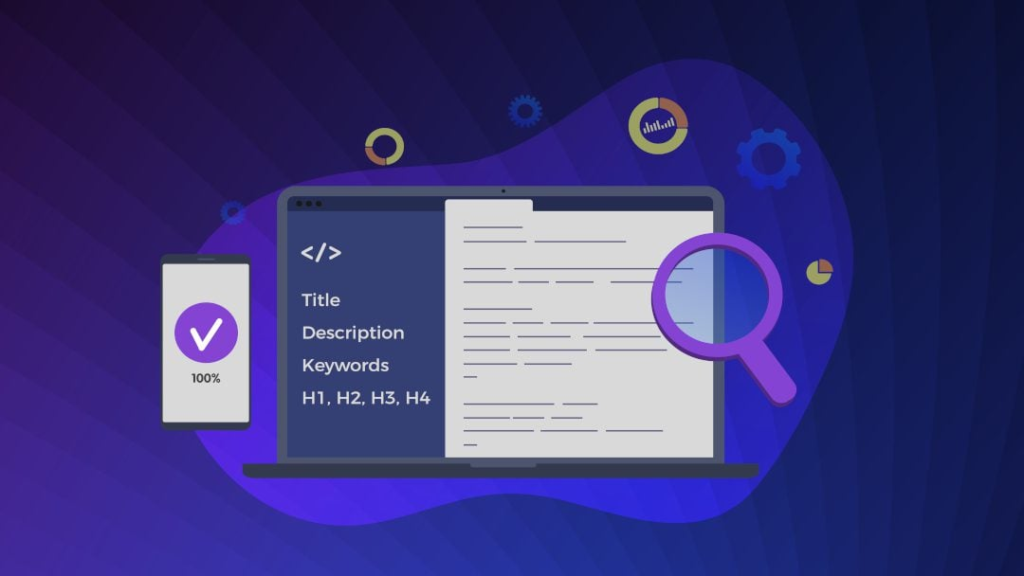Introduction
In the ever-evolving landscape of digital marketing, search engine optimization (SEO) plays a pivotal role in driving organic traffic to websites. Among various SEO strategies, blogging stands out as a powerful tool that can significantly impact your website’s search rankings and overall online presence. In this article, we delve into the significance of blogging in SEO and provide actionable tips for achieving success.

The SEO Benefits of Blogging
1. Enhancing Website Relevance
Regularly publishing high-quality blog posts allows you to create fresh, relevant content that search engines crave. Each blog post presents an opportunity to target specific keywords and topics, signaling to search engines that your website is continuously updating and relevant to users’ queries.
Also Check The Art of Effective Keyword Mapping for SEO 2023
2. Building Authority and Expertise
Blogging offers a platform to showcase your knowledge and expertise in your niche. By providing valuable insights, tips, and solutions, you can establish yourself as an authority in the industry, which not only attracts a loyal readership but also gains recognition from search engines.
3. Generating Inbound Links
Compelling and informative blog posts naturally attract inbound links from other websites. Search engines consider backlinks as a vote of confidence, boosting your website’s credibility and authority. A solid backlink profile can significantly impact your search rankings and propel you ahead of your competitors.

Crafting SEO-Optimized Blog Posts
1. Keyword Research
Before creating content, conduct thorough keyword research to identify relevant and high-traffic keywords related to your industry. Utilize keyword research tools to uncover valuable insights and incorporate these keywords strategically into your blog posts.
2. Engaging and Shareable Content
High-quality content that engages readers and encourages sharing is crucial for SEO success. Craft well-structured, informative, and entertaining posts that resonate with your target audience, increasing the likelihood of social shares and backlinks.
3. Optimizing Meta Tags
Pay careful attention to meta tags, including the meta title and meta description. Craft compelling and keyword-rich meta tags that entice users to click through to your blog post when it appears in search results.
4. Internal Linking
Internal linking is an often overlooked but vital aspect of SEO. Incorporate relevant internal links within your blog posts to improve website navigation and distribute link equity across your site.

The Impact of Blogging on Website Traffic
Consistent and strategic blogging can significantly impact your website’s traffic and organic search performance. As you publish informative content, search engines index and rank your blog posts, making your website more discoverable to users searching for related topics. With time, the cumulative effect of multiple well-optimized blog posts can lead to a substantial increase in organic traffic.
Understanding User Intent and Creating Relevant Content
To maximize the SEO potential of your blog posts, it’s crucial to understand user intent. Analyze the search queries and user behavior to determine what information they seek. By aligning your content with user intent, you increase the chances of ranking higher in relevant search results.
Long-Form Content vs. Short-Form Content
The debate between long-form and short-form content is ongoing. While both have their merits, long-form content tends to perform better in SEO. Search engines often favor comprehensive, in-depth articles that thoroughly cover a topic, providing valuable insights to readers. Aim for content that exceeds 2,000 words when tackling complex subjects.
Creating an SEO-Friendly Blogging Schedule
Consistency is key when it comes to blogging for SEO success. Develop a content calendar and stick to a regular posting schedule. This approach not only helps you stay organized but also signals to search engines that your website is active and continually producing valuable content.

Implementing Blog Post Promotion Strategies
Publishing outstanding blog posts is just the first step. To ensure your content gains the visibility it deserves and outranks your competition, you need to implement effective promotion strategies. Here are some proven methods to amplify the reach of your blog posts:
1. Social Media Promotion
Leverage the power of social media platforms to share your blog posts with your audience. Craft compelling and attention-grabbing posts with eye-catching images or videos that encourage users to click through to your blog. Engage with your followers, respond to comments, and foster a sense of community around your content.
2. Guest Blogging
Collaborating with other reputable websites through guest blogging can expose your content to a broader audience. Seek out opportunities to contribute valuable guest posts to authoritative websites within your niche. Ensure that your guest posts include a link back to relevant articles on your blog, boosting your website’s traffic and authority.
3. Influencer Outreach
Identify influencers and thought leaders in your industry and build relationships with them. Engage with their content, share their posts, and mention them in your blog articles when relevant. Influencers can help amplify your content by sharing it with their followers, driving more traffic and potential backlinks to your blog.
4. Email Marketing
Leverage your email subscriber list to promote your latest blog posts directly to interested readers. Create engaging newsletters that provide a snippet of the blog post’s content and a compelling call-to-action (CTA) to read the full article on your website. This strategy not only drives traffic but also encourages social sharing among your loyal subscribers.

Monitoring and Analyzing Performance
An essential aspect of outranking your competitors is continuous monitoring and analysis of your blog’s performance. Utilize various SEO tools to track important metrics, such as website traffic, keyword rankings, bounce rates, and user engagement. Regularly review and analyze this data to identify areas for improvement and refine your content and promotion strategies accordingly.
Staying Ahead with Updated and Evergreen Content
To maintain your competitive edge, focus on creating both updated and evergreen content. Updated content involves revisiting and enhancing existing blog posts to reflect current trends and new information. Search engines favor fresh and relevant content, and updating your articles can signal that your website is continually improving.
On the other hand, evergreen content addresses timeless topics and remains relevant over an extended period. Crafting comprehensive guides, tutorials, or resource lists ensures that users will find value in your content for years to come. Balancing both updated and evergreen content in your blogging strategy helps you stay ahead of the competition and maintain consistent organic traffic.
Leveraging Visual Content for Enhanced SEO
In the quest to outrank the competition, don’t overlook the power of visual content. Integrating visuals into your blog posts can significantly enhance user engagement, improve SEO metrics, and boost your overall search rankings. Here are some effective ways to leverage visual content for SEO success:
1. Infographics
Infographics are a visually appealing way to present complex information in a digestible format. Create informative and well-designed infographics that complement your blog posts. Infographics have a higher chance of being shared on social media, increasing your content’s reach and potential backlinks, which can positively impact your website’s authority.
2. Images and Alt Text
Incorporate relevant and high-quality images throughout your blog posts to make them more visually appealing. Remember to optimize image alt text with descriptive and keyword-rich phrases. Alt text not only improves accessibility for visually impaired users but also provides additional context to search engines, helping them understand your content better and potentially boosting your rankings.
3. Videos
Integrating videos into your blog posts can significantly enhance user engagement. Engaging and informative videos can keep visitors on your page longer, reducing bounce rates and signaling to search engines that your content is valuable. Additionally, hosting videos on platforms like YouTube and embedding them in your blog posts can attract a broader audience and improve your website’s overall visibility.
4. Visual Data Representation
When presenting statistical data or research findings in your blog posts, consider using visual representations such as charts, graphs, and diagrams. Visual data helps readers grasp complex information quickly and can lead to increased social sharing and backlinks from other websites seeking authoritative sources.

Mobile-Friendly Optimization for SEO
With the majority of internet users accessing content through mobile devices, optimizing your blog posts for mobile is essential for SEO success. Google prioritizes mobile-friendly websites, and failing to provide a seamless mobile experience may hinder your rankings. Here are some key tips for mobile optimization:
1. Responsive Design
Ensure your website and blog posts have a responsive design that adapts to different screen sizes and devices. Responsive design not only improves user experience but also sends positive signals to search engines.
2. Fast Page Loading Speed
Optimize your blog’s loading speed to cater to mobile users who may have limited bandwidth or slower internet connections. Compress images, minify code, and leverage browser caching to reduce loading times.
3. User-Friendly Navigation
Simplify your blog’s navigation for mobile users. Use clear and intuitive menus, buttons, and navigation bars to help visitors find the information they need effortlessly.

The Importance of User Experience (UX) in SEO
Search engines prioritize websites that offer exceptional user experiences. Ensuring a positive UX on your blog can lead to longer dwell times, lower bounce rates, and increased engagement – all of which are positive signals for search engine algorithms. Consider the following UX tips:
1. Readability
Create blog posts with clear and easy-to-read fonts and proper formatting. Use short paragraphs, bullet points, and subheadings to break up large blocks of text, making it more appealing to readers.
2. Internal Search Functionality
Incorporate an internal search bar on your blog to help users find specific content quickly. A robust search function encourages visitors to explore more of your website, improving the chances of ranking for various relevant keywords.
3. Mobile-Friendly Design (Reiterated)
As mentioned earlier, optimizing for mobile is critical for a positive UX. Ensure all aspects of your blog, including visual content, are fully accessible and user-friendly on mobile devices.
Conclusion
In the competitive world of SEO, integrating visual content, optimizing for mobile, and prioritizing user experience are crucial factors in outranking your competitors. By leveraging infographics, images, videos, and visual data representation, you can engage your audience and attract valuable backlinks. Additionally, providing a seamless mobile experience and optimizing for user experience will keep visitors on your blog longer, sending positive signals to search engines.
As you implement these strategies and create comprehensive, high-quality content, you can steadily climb the search engine rankings, establish your website’s authority, and drive organic traffic. Always stay updated with the latest SEO trends and continuously refine your approach to maintain a leading position in the search results.
So, let your exceptional English content and well-crafted SEO strategies propel your blog to new heights, ultimately outranking the competition and establishing your website as a go-to resource in your industry.
Frequently Asked Questions (FAQ) – The Role of Blogging in SEO

1. Why is blogging important for SEO?
Blogging is essential for SEO because it allows you to create fresh and relevant content regularly. Each blog post presents an opportunity to target specific keywords, improve website relevance, and demonstrate expertise, all of which are factors that search engines consider when ranking websites.
2. How does blogging help in building authority and expertise?
By consistently publishing high-quality and informative blog posts, you can showcase your knowledge and establish yourself as an authority in your industry. This helps build credibility with both readers and search engines, leading to improved rankings and increased organic traffic.
3. Can blogging generate inbound links to my website?
Yes, compelling and valuable blog posts can attract inbound links from other websites. Backlinks are crucial for SEO, as they act as votes of confidence from other sites, indicating to search engines that your content is valuable and worthy of ranking higher.
4. What role does keyword research play in blogging for SEO?
Keyword research is vital for identifying relevant and high-traffic keywords that your target audience is searching for. By incorporating these keywords strategically into your blog posts, you can improve your chances of ranking higher in search engine results for those specific queries.
5. How can I optimize my blog posts for SEO?
To optimize your blog posts for SEO, focus on creating engaging and shareable content, optimizing meta tags, internal linking, and using descriptive image alt text. Additionally, align your content with user intent and consider the length of your articles, aiming for comprehensive and in-depth pieces.
6. Does the length of blog posts matter for SEO?
Yes, the length of blog posts can impact SEO. Search engines tend to favor comprehensive, long-form content that provides in-depth information on a topic. Aim for content that exceeds 2,000 words for more competitive keywords and topics.
7. How can I promote my blog posts to improve SEO?
Promoting your blog posts through social media, guest blogging, influencer outreach, and email marketing can significantly enhance their visibility. Increased sharing and backlinks can positively impact your website’s authority and search rankings.
8. Is mobile optimization essential for blogging and SEO?
Yes, mobile optimization is crucial for both blogging and SEO. With the majority of internet users accessing content through mobile devices, having a responsive and mobile-friendly website is a critical ranking factor in search engine algorithms.
9. How can I monitor the performance of my blog posts for SEO?
You can use various SEO tools to monitor important metrics, including website traffic, keyword rankings, bounce rates, and user engagement. Regularly analyze this data to identify areas for improvement and refine your content and promotion strategies accordingly.
10. What is the impact of user experience (UX) on SEO for blogging?
User experience plays a significant role in SEO. Positive UX factors, such as readability, internal search functionality, and mobile-friendliness, lead to longer dwell times and lower bounce rates, which are positive signals for search engines.
Remember that consistently creating high-quality, SEO-optimized content and staying updated with the latest SEO trends will help you outrank your competition and achieve long-term success with blogging for SEO.

